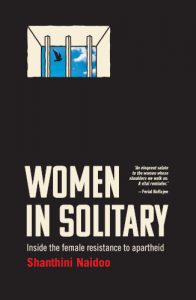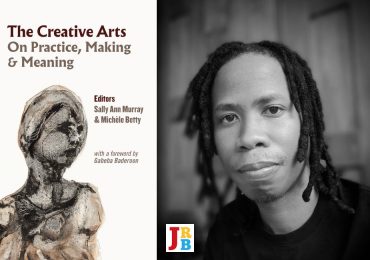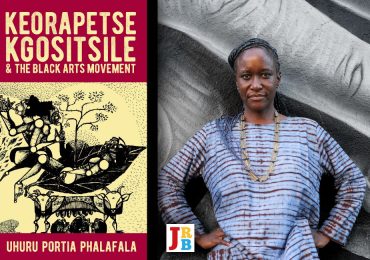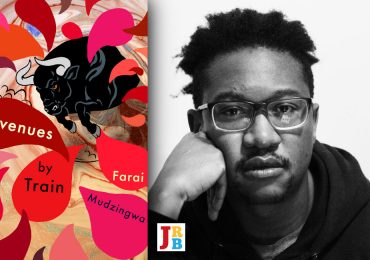The JRB presents an excerpt from Shanthini Naidoo’s book Women in Solitary: Inside the Female Resistance to Apartheid.

Women in Solitary: Inside the Female Resistance to Apartheid
Shanthini Naidoo
Tafelberg, 2020
Read the excerpt:
The security branch came for her [Shanthivathie (Shanthie) Naidoo] on 13 June 1969, a few weeks after she had read about Winnie, Rita and Joyce’s detention. ‘I was in bed, at home in Rockey Street. It was a normal day, I was going to go to work at Vanguard. It was Friday the 13th, if I remember. They came in and in front of my mother, said: “Pack your bags, we are detaining you under the Terrorism Act.”
‘I didn’t think I was a terrorist,’ the petite woman says with a smile. ‘Then again, your life is political activism, and I knew that Joyce, Winnie and Rita were detained a month or so before me. It was in the papers. So maybe it was not too much of a surprise. There were informers … we later found out they went to our neighbours … they saw who was coming and going to the house.’
She wasn’t told why she was being arrested or given any notice of what was going to happen. ‘I packed a few things, grabbed an extra dress or two, underwear. It was winter, I took my overcoat with me luckily … It was so cold on the cement floor. I eventually used it as a pillow. Prema, Murthie and the whole family watched. When the police came, it was not one or two, they would never come on their own. There were quite a few of them … but they didn’t do anything to hurt me. My brother asked, “Can she take books?” We found a Reader’s Digest or two and they said it was okay. When we went to the Old Fort, they took them away.’
She was not afraid, but worried about her mother not knowing where she was headed. One could disappear in the cells without contact with the outside world.
‘I took a small bag with me, but I never saw it for months. They put me into a single cell, with a jug of water. The cells were so, so cold. We were given buckets (for ablutions). When they found out where I was after a few weeks, the family sent winter underwear, but I never received it,’ she says.
She closes her eyes and smiles grimly, recalling the gaol, remembering incredulously how people who believed they were doing good were treated so badly. ‘There were mats … blankets to sleep on.’ The blankets were grey, rough, often infested with insects, at best tattered and dirty.
Most female political prisoners started off at the women’s prison before being moved to larger prisons. The Old Fort was the lesser evil of what was to come.
‘I didn’t feel as isolated at the Fort. There were lots of women; fruit sellers, people in for (contravening) pass laws; you could hear voices. I was there for two weeks. After that I was taken to Pretoria.’
Driven by several security branch officers, she arrived at Pretoria Central Prison, where the façade of the women’s section comprised a high rock wall with a single metal door in it. She was put into a single cell. It had a cold concrete floor and was draughty. She didn’t know it then, but it would become her home for more than a year.
‘I was completely isolated. That was really, really difficult to cope with. The family didn’t know where I was. I knew my mother would be fretting. I imagined that she would keep going to the prisons around the province, wondering whether I was coming back, you know.’
The time alone was endless. They were not informed of any legal procedures or allowed to meet with lawyers. ‘You’re alone and your mind just wanders … to everything. You think of your whole life. When I ate, I thought of my brother Indres (who was already in prison on Robben Island). He was a vegetarian, but they didn’t care. He had to eat to survive. We all did,’ she says.
Soft porridge for breakfast, pap and sandy vegetables for lunch, sometimes a piece of fatty meat was the special of the day. Undercooked samp, or mielie kernels, also made their appearance under the doors at dinner time, accompanied by a dehydrated supplement, phuza mandla. Often, the food was left outside and came with bird droppings.
‘Solitary confinement is terrible, terrible.’ Shanthie stresses the point by squeezing the tissue in her hands. ‘Sometimes I would think, They had better interrogate me. At least there was contact. I didn’t have anything to read or anything of the sort. So you exhaust yourself, you do your exercise. You can’t sleep, so you want to make yourself really tired. I would march and march. And I would do my prayers in the morning.’ She is still a practising Hindu.
Ulagelaam uNarnthu ohthurku ariyavan
Nilavu ulaaviya neermali veyNiyan
Alagil johthiyan ambalatthu aaduvaan
Malar chilambadi vaaltthi vaNanguvaam
Aum, shanti, shanti, shanti
*
Lord Shiva, the Lord of the world whose grace is a rare privilege to realise,
The unparalleled Lord, who is adorned with the crescent moon
and Mother Ganga in His matted locks,
the Lord whose Light is limitless,
the Lord who has done the dance of creation at Chidambaram.
I pray at your flower-adorned Feet
… Aum, peace peace peace
This was how Joyce, Nondwe and Ma Rita knew Shanthie was nearby. Joyce had chuckled when she told me: ‘She would make a noise, Shanthie, singing her prayers early, early in the morning.’
~~~
- Shanthini Naidoo is a former Sunday Times journalist who works in content marketing. She has also worked for The Times newspaper and O magazine. Naidoo lives in Johannesburg with her husband and two daughters.
~~~
About the book
‘The freezing loneliness made one wish for death,’ the journalist Joyce Sikhakhane-Rankin said of her time in solitary confinement. With seven other women, including Winnie Madikizela-Mandela, she was held and tortured in Pretoria Central Prison for more than a year.
This is the story of four of the women—Sikhakhane Rankin, Rita Ndzanga, Shanthie Naidoo and Nondwe Mankahla—and their refusal to testify in the ‘Trial of 22’ in 1969, their brutal detention and how they picked up their lives afterwards.
Through interviews with the four, author Shanthini Naidoo explores the female experience of activism and how women take on additional political roles to their personal ones.
These mothers, daughters and sisters who fought for our democracy, even after their release, are remembered through storytelling—a tool for healing generational wounds in South Africa.






One thought on “‘Sometimes I would think, They had better interrogate me. At least there was contact.’—Read an excerpt from Women in Solitary: Inside the Female Resistance to Apartheid by Shanthini Naidoo”